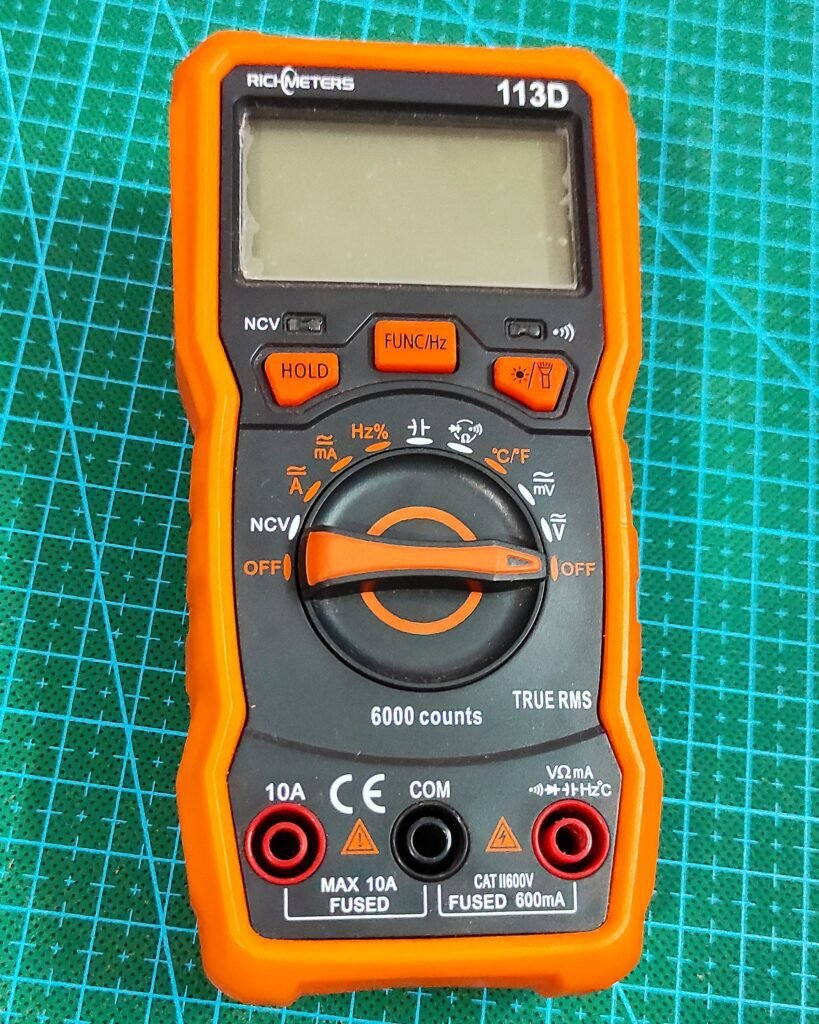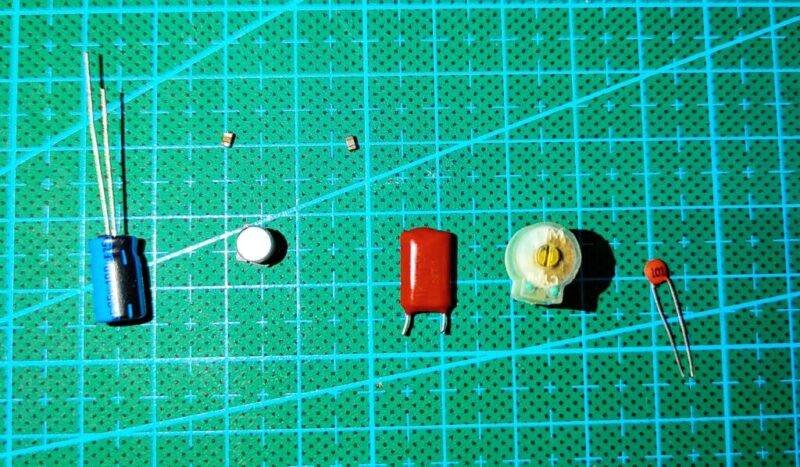Hey Guys, I’m back again with another interesting article on Basic Electronics. Today we are going to discuss CAPACITOR. Yes, most of you must be amazed by listening to this and wonder that is rather quite simple, but it isn’t as it seems to be. So to clear up Basic Concepts about capacitors and understand how does a capacitor work?. We are taking up this topic to give you all a clear picture of this. Let’s begin!!!
Table of Contents
What is Capacitor ?
Capacitors’ words first make our assumption to capacity or storage. Yes, it is a device which is used to store a small amount of charge. A charge is the very basic quantity of electricity. Everything in electricity which needs to do something requires some amount of power, or we can say that it requires a charge. There are various types of capacitors that are available in the market and for various purposes. But the most basic form can be called a parallel plate capacitor.
Capacitors are used for various purposes like purifying current, decoupling, signal processing, also as oscillators. Let’s discuss these in detail later. The capacitors are very useful while making breadboard circuits or making some practice implementations in the early stages as careful calculations need to be made at that time but in the finished product, we won’t be able to do sometimes.
Capacitor working:
So, here we are talking about The working of capacitors which is very simple. Capacitors usually store some charge in it at a specific voltage to perform certain tasks. Like in DC or AC motors it is used as starters which provides some backup charge in it to soft start motors. Or in Rectifiers or Transformers circuits, it is used as decoupling and purifying capacitors. Also in RF circuits, it is used for signal processing and antenna purpose.
Capacitors stores the charge when we connect it to the power supply for a short duration of time as you can see in the diagram there are two parallel plates that connect to the positive and negative. so on one plate, there is a positive charge collected and on the other plate, there is a negative charge collected. so these charges remain there for a short duration of time so, this is how does a basic capacitor work.
These all work to reduce the electric field which is developed due to high voltage and current flow in a circuit. Like in amplifiers circuits it is very compulsory to use capacitors or there will be some type of noise. Or in Audio circuits, To connect the microphone to the circuit a capacitor is used in series with the microphone to reduce the disturbances and noise developed.
How to measure capacitance:
Now the first question is what is capacitance? the capacitance is the capacity of the capacitor to store the charge.
Capacitance can be measured by using measuring devices like multimeters or using formulas. As I have described earlier that the most basic Capacitor is PARALLEL PLATE CAPACITOR. A parallel plate capacitor is a simple arrangement of two conducting metal plates kept at a small distance apart. When these plates are connected with a power supply, one plate accumulates a positive charge while the other accumulates a negative charge.
The distance is infilled with some sort of dielectric material. This dielectric material is solely responsible for the increase and decrease in capacitance. For this, we can either use a multimeter like the images below or use this formula for calculating CAPACITANCE. so, by this formula, we can learn how to measure capacitance. CAPACITANCE is defined as the tendency of a component in a circuit to store some amount of energy in the form of charge at a specific voltage.

RICHMETERS R113D

UNITY DT-9205A
These are the two multimeters that I use personally for my all projects and demonstrations. These can easily be found on the net. RICHMETERS R113D, UNITY DT-9205A. Frankly, I say that I have purchased Richmeters one from AliExpress at a cheaper price. But as in INDIA now AliExpress is banned, you may find it a bit costly.
Now if you want to measure capacitance using Formula then here it is
C=εoKA/d
Here εo is the Permittivity of free space, K is the dielectric constant, A is the area of the plate and d is the distance between the plates. C is the capacitance of the capacitor its unit is Farad. Also, the relation between charge, voltage, and capacitance are:
q=CV
Here is the table for calculation of the capacitance according to the code printed on it:
So, here we all the unit of capacitance that is Farad.
we can use it with many parameters like nano, micro, pico.
Capacitors Parallel Combination:
If capacitors are connected in parallel in the circuit then it is opposite to the resistors means, capacitance is added like Cnet = C1 + C2 + C3 + ……………. + Cn. But keep in mind if you are using capacitance rated at different voltages then supply voltage with reference to the lowest rated one else capacitors will blast like firecrackers 🧨🧨 in the circuit, and it could be dangerous. Believe me, it is not fun guys to play with electronics it is much more dangerous than you see it while reading I had experienced it personally.
Capacitors Series Combination:
If capacitors are connected in Series, then capacitance is added in reciprocal way like:
1/Cnet =1/C1 + 1/C2 + 1/C3 + ……………….. + 1/Cn or to simplify this it can be written as Cnet = C1 x C2 x C3 x …………….. x Cn/(C1 + C2 + C3 + …………………… + Cn).
Types of Capacitor:

On the basis of polarity:
Polar Capacitor:
These are capacitors that have specif pins for positive and negative terminals. These are advised to be connected as the pins are defined, if connected in the wrong way it may malfunction or behave improperly.
Non-polar Capacitors:
These are capacitors that are not defined for any polarity or terminals. It can be connected in any position, it does not affect the behavior or malfunction like polar capacitors.
On the basis of Material & Composition:
Parallel Plate Capacitor or Dielectric Capacitor
These capacitors are the most basic ones, which are made of two simple conducting plates. These are mainly filled with air or left open so, that air acts as the dielectric. In this type, the capacitance can be changed by changing the dielectric or moving the plates away or near as needed.
Film Capacitors
These capacitors are made of films and enclosed in epoxy substances. These are generally non-polar capacitors that can be connected in any position. But these come in a small range of values up to 100µF. The cap is mainly used in high voltage and current devices, somewhat like AC devices.
Radial & Axis Lead Capacitors
These capacitors areas the same as Film capacitors, but they are rolled into axis type or radial type with the dielectric film sandwiched between them. These are also mainly non-polar, which can be connected in any way. Also, they come in a small range. But they are used in more power and precise devices for stability and efficient working.
Ceramic Capacitors
These are capacitors to which we are most familiar. These are the most common, easily available, and wide range of values available in the market. They are mainly non-polar and can be used only in low-power devices. They can withhold a small amount of power and at medium voltage. They are basically coded according to the chart mentioned above. They come in both SMD and DIP versions.
Electrolytic Capacitors
This is the last type of capacitors we are discussing today. If you are a hobbyist and have a craze to open destroyed appliances. Then you must have seen these types of capacitors a lot. They come in both the SMD version and the DIP version. They are basically polar capacitors that are advised to be connected in the correct polarity or may cause dangerous effects. Also, they blast which great energy and sound are connected in overvoltage 😂😂😂.
So, At this point, we come to an end to this Basic Electronic article. Have fun reading it and if you get some doubts then you can comment below freely.
Applications of Capacitors.
- AS we all know the basic working of the capacitor is to store the charge
- it reduces the ripple factor in the electronic so we use the capacitor to cancel the ripple.
- Also if we want to run the motor we need a capacitor example our ceiling fan
- in the device where we need to bypass the signal (high frequency signal)
- we also use capacitors in the tank circuit to generate the high-frequency signal.
- also we use capacitor in DC and AC applications.
FAQ
Que.1 What size capacitor should I get?
Ans. The capacitor obviously depends on size the capacitance is directly proportional to the size if you need more capacitance surely you will need more size of the capacitor.
Que.2 How do I hook up capacitors?
Ans. To select the capacitor you can calculate the capacitance by using the above-given formula.
Que.3 What value of capacitor for power supply
Ans. depend on how much voltage you are working so, here the formula can help you.
Que.1 why does my capacitor burn
Ans. when we attach more power than the given for a particular capacitor.
